MacBook Air M3 review three months later: The best Mac for nearly everyone
MacBook Air M3
4.5 / 5After more than three months of use, the M3 MacBook Air has proven itself to be Apple's best Mac for almost anyone, with more than enough flexibility and power for daily tasks.
I had my initial Macintosh SE that I bought in 1987 for many, many years. I lugged it to gigs and to college in one of those nylon carry bags, I forget the brand, and basically used it as a 17-pound luggable. It hit more than 20 pounds after the addition of the weight of the keyboard.
But things went bad, economically in the late-'80s and very early '90s. Off to the Navy I went, so a giant machine with a CRT wasn't practical all of a sudden, for fairly obvious reasons.
After a few years in training, I shifted to a nice desktop at home, and an assortment of PowerBooks, starting with the 540c. I maintained this "one desktop, one laptop" schema for about 16 more years.
In 2011, I shifted over to MacBook Pro as my only machine. The line had finally matured enough for me to not need a desktop, because at the time, my cluster computing days were over, and I wasn't doing heavy computational lifting any longer, nor did I think I'd have to.
Fast-forward to 2022. For professional reasons, here and elsewhere, I'd gone back to a beefy desktop in the form of the M1 Ultra Mac Studio.
For family reasons, I was doing a lot more traveling than I used to. That 16-inch M1 Max MacBook Pro I got in 2021 was just too heavy and didn't fit on tray tables anywhere, including on the train which is a bit more generous than on the plane.
So, it was time to rethink things again. In the spring of 2024, I bought the M3 MacBook Air shortly after release, and have been using it ever since. Specifically, I got the 8GB RAM, 256GB storage configuration, because I have a powerhouse in the home office.
So, let's talk about it. This review was composed entirely on the MacBook Air.
M3 MacBook Air review - Specs & design
| Specifications | M3 MacBook Air (2024) |
|---|---|
| Retail price | $1,099 (13-inch), $1,299 (15-inch) Best M3 MacBook Air 13-inch prices Best M3 MacBook Air 15-inch prices |
| Dimensions (inches) | 11.97 x 8.46 x 0.44 (13-inch), 13.40 x 9.35 x 0.45 (15-inch) |
| Weight (pounds) | 2.7 (13-inch), 3.3 (15-inch) |
| Display | 13.6-inch Liquid Retina, 15.3-inch Liqud Retina Wide Color (P3), True Tone |
| Resolution | 2,560 x 1,664 (13-inch), 2,880 x 1,864 (15-inch) |
| Brightness | 500 nits |
| Processor | Apple M3 8-core |
| Graphics | 8-core GPU (13-inch only) 10-core GPU |
| Memory | 8GB, 16GB, 24GB |
| Storage | 256GB, 512GB, 1TB, 2TB |
| Battery | 52.6Wh lithium-polymer, (13-inch), 66.5Wh lithium-polymer (15-inch) |
| Networking | 802.11ax Wi-Fi 6E Bluetooth 5.3 |
| Touch ID | Yes |
| Camera | 1080p FaceTime HD |
| Audio | Four-speaker sound system (13-inch), Six-speaker sound system (15-inch), Three-mic array with directional beamforming, Voice Isolation and Wide Spectrum mic modes, Headphone jack with high-impedance headphone support, Dolby Atmos support with Spatial Audio |
| Ports | Two Thunderbolt/USB 4 ports 3.5mm headphone, MagSafe 3 |
Apple has retained same aluminum flat slab and industrial aesthetic enclosure that it rolled out for the 16-inch MacBook Pro. The chassis comes in at 11.97 inches by 8.46 inches, notably smaller than that 16-inch MacBook Pro.
And, most importantly for my personal purchase criteria, it fits comfortably on a train tray table.
Get used to this design. Apple kept the last MacBook Air design for nearly a decade. It's still an excellent blend of form and function, and not a disappointment despite what breathless YouTube takes may claim.
Apple proudly exclaimed that the Midnight finish is less prone to retaining fingerprints and skin oil. Don't believe the claim, though, as the new model seems about as finger print prone as the last.
M3 MacBook Air review - Display and Audio
A downgrade from the MacBook Pro is the display. The 13.6-inch Liquid Retina Display has a resolution of 2,560 by 1,664 and a pixel density of 224 pixels per inch. The backlighting is still LED instead of the miniLED enjoyed by the MacBook Pro line, but it manages the typical 500 nits of brightness.
It also retains support for 1 billion colors, Wide Color (P3), and True Tone. For my intended use case, this is fine. It doesn't get as bright, and so forth, as the MacBook Pro does, but that's not the point of a $1000 machine, really.
The notch is here to stay. Apple's solution remains elegant enough. It wasn't a big deal when it popped out in the Apple Silicon MacBook Pro, and still isn't now.
That FaceTime HD camera is a reuse of the 1080p upgrade from the 2022 redesign, and still not an iPhone-style True Depth array that could occupy the space. Apple's use of computational video and the M3's onboard advanced image signal processor makes the image as good as possible.
On the audio side, it's still got the great four-speaker sound system for the 13-inch model. It also supports Wide Stereo Sound and Spatial Audio for Dolby Atmos content.
I don't use this as much, but folks that don't have a secondary machine, or headphones, will. What makes more difference in everyday use is the three-mic array with directional beamforming. The Voice Isolation and Wide Spectrum modes Apple included in the iPhone 15 Pro line has been imported here, to help improve video calls.
In actual use, I like the microphone array on the M3 MacBook Air better than I did on the M1 Max 16-inch MacBook Pro. The newer hardware performs better in noisy environments, and works about the same in a quieter office.
M3 MacBook Air review - Ports, power, and periphery
On the left-hand side of the MacBook Air is a pair of Thunderbolt/USB 4 ports for connecting peripherals, docks, and drives. If you're using this as your main machine, moving from desktop to portable, we highly recommend a Thunderbolt dock for your desk, because it that situation this is just not enough connectivity.
On the go, though, it's more than enough.
You can recharge the MacBook Air using one of those ports, but you're probably better off doing so with the MagSafe 3 connection right next to them.
The battery is a 52.6-watt-hour lithium-polymer version for the 13-inch. Apple says that this lasts for up to 15 hours of wireless web access, and up to 18 hours of Apple TV app movie playback.
As it did last year, our testing for our initial review bore this out, and the more than three months that have elapsed since have continued to bear this out. Obviously, the harder you hammer the processor and the brighter you keep your monitor, the shorter life you'll get.
Speaking of which, there's a lot of chatter about how the Windows ARM machines beat the MacBook Air for battery life. That may be true, but for the most part, but to get that performance, you have to accept dramatically cut performance from the Windows side.
This doesn't make much of a difference when you're watching video, as there is power-sipping hardware decode on both MacBook Air and Windows ARM. Where you'll take a hit on the Windows side is doing actual work, as most of the hardware's battery saving cuts clock speed way, way down.
The charger you get with the MacBook Air depends on the chip you select for it. If you go with the M3 13-inch with the 8-core GPU, you get the 30W USB-C Power Adapter, while the 10-core GPU and 512GB of storage upgrades you to the 35W Dual USB-C Port Compact Power Adapter.
But, any USB-C charger will do, really. My travel kit has a 20W USB-C PD port, and that keeps the machine full just fine. Even if Amtrak didn't have AC outlets, a small battery bank would give more than enough power to make it all day and all night.
As a pro-tip, though, if you're doing air travel, have a USB-A to USB-C cable in your travel bag. Most of the flights that have power only have USB-A.
Apple's Magic Keyboard retains all of the features it's had for a while, such as the full-height function row and the inverted-T arrow keys. Backlighting and an ambient light sensor are standard for Apple's notebooks, with Touch ID returning once again for authentication.
So, typing is just as comfortable as it's been since Apple banished the Butterfly keyboard. I didn't have a problem with that keyboard in any way when I had a 2016 MacBook Pro, but I am aware that I am the exception rather than the rule.
M3 MacBook Air review - M3 and performance
For this review, we're talking about the four-performance-core, four-efficiency-core model of the M3 chip.
Memory bandwidth remains at 100GB/s, along with a 16-core Neural Engine, and the Media Engine. The Media Engine is upgraded this time to include a dedicated AV1 decode engine alongside the other encode and decode engines — which I did not have on the M1 Max MacBook Pro.
The AV1 decode engine doesn't matter much right now, though. YouTube uses AV1 now, and Netflix is starting to use it. It may matter more in the future.
Unified memory options are the same as last time, with an 8GB starter allocation and options for 16GB or 24GB available.
On the 13-inch side, customers have the choice of an 8-core or 10-core Apple-designed GPU. The 15-inch has the 10-core GPU by default. The GPU also gains hardware-accelerated ray tracing, an addition that can benefit gaming and graphical applications.
What has been improved, slightly, is external monitor support. Starting with the 2023 MacBook Air, it is possible to use two external displays with the M3 MacBook Air when the unit is in Clamshell Mode.
Previously, the two-display limit always included the built-in screen as one of them, so this change will help for some desk setups. Since you can't access the keyboard, trackpad, nor Touch ID sensor when the Mac is in Clamshell Mode, you obviously need external accessories.
This is a bit of a downgrade from the MacBook Pro when compared directly. But, as always, we recommend knowing what you need and balancing it with your budget and what you want. I knew from the beginning that I wouldn't need multiple monitor support like I do with my Mac Studio at home, so this isn't an issue for me.
But, it is a friction point for many. We're expecting to see some improvements on this with the M4 MacBook Air, whenever that arrives.
As far as the speed of the machine goes, we've already talked about M2 to M3 MacBook Air previously, and won't do so again here. There are some interesting compares to make versus first-generation Apple Silicon MacBook Pros, though.
Nearly anything that users do is single-core. So, in practicality, the M3 MacBook Air is just as fast as my Mac Studio is for basic computing tasks, web surfing, and so forth.
And, that MacBook Air is faster than the three-year old MacBook Pro is at these tasks. It's not a hugely perceptible difference, though, as you may expect.
And, effectively, I gave up nothing in multi-core processing power in downsizing to the MacBook Air from the MacBook Pro, other than active cooling.
Where the big difference lies is in the GPU speed. This too is workflow dependent, and I'm not a big gamer on the train beyond a match-three on the iPhone. So, for my use case, this doesn't matter at all.
It will to more desk-bound folks than I, or folks that want to use a portable device as a gaming platform. Some you may have involuntarily snorted with the mention of "gaming platform," but Apple is at least giving lip service to Mac gaming as of late.
And, if you're so inclined, there are now options to run some of those big Windows games on Mac that don't have an official port.
In testing the M3 and M2 MacBook Air using the Blackmagic Disk Speed Test, my M3 MacBook Air achieved a read speed of 2,740 megabytes per second and a write speed of 1,917 megabytes per second. This is close to, but not the same as, my M1 MacBook Pro.
What they are, though is much higher than the M2 256GB capacity, at 1,158MB/s for reads and 1,600 MB/s for writes.
Always ridiculous complaints about heat
As it does every release period, there is nearly instant complaints on YouTube about thermal conditions with a thumbnail with a shocked face, and perhaps some flame clip art overlaid on the Apple product in question.
I've said it before, and I'm saying it again — this has been and always shall be an issue generated by folks who believe in clicks and views over anything else.
As has been the case for 20 years or more, any chip made by any foundry in any piece of hardware will get hot and slow down temporarily until it cools. This is by design, and intentional. The lack of a fan in a MacBook Air is also an intentional engineering choice, and a differentiator between the Air and Pro lines.
Any machine, ever built, can have a test designed for it that will heat the machine and cause this slowdown. It's easy to pick applications that can do this, that can inflate memory pressure with 100 Chrome windows, hammer on the CPU by playing video, and run a beefy workload for as long as it takes to generate the outcome that's desired for the video.
Doing this for the gotcha hot takes and to harvest the internet rage clicks completely ignores who — and what — the MacBook Air is for.
It's been a long time since iPhone purchases were driven by Mac sales. It's been the other way around for a very long time.
More often, MacBook Air sales are driven by folks who want another product, happy with what the iPhone brings. That's the main audience for the MacBook Air, and they aren't going to hammer on the machine like that.
There's also been a lot of complaints about 8GB of RAM standard on the MacBook Air and Mac mini. If you're using it as an accessory for your Mac, or for light use, 8GB is fine. It's not capacious, but it's fine.
It'll handle Safari, Pages, Apple Music, and more, in parallel, just fine. It's less fine as you add notorious RAM hog Chrome and a lot of open tabs, use anything vertical market, or similar.
If you're not looking at the MacBook Air as a portable computing appliance, or if your time is that valuable that you're considering storage or RAM upgrades beyond 8GB, get a MacBook Pro. That's why I initially got the MacBook Pro, after all, and it's why the Mac Studio is on my desk.
With any real upgrades to the 13-inch MacBook Air to drive it into prosumer territory, you're going to hit that 14-inch MacBook Pro territory pretty quick — but there's a larger gap this year than in most.
And, you probably already know going into this review if you need that power, coupled with active cooling, or if you don't. I bought it with the configuration that I did because I know I'm going to use it like that iPhone "halo" user does, and I'm not going to run fluid flow calculations or heat exchange simulations on the train.
That's what the beefy computer at home with the absolutely massive heat sink and fan is for.
M3 MacBook Air review - Pricing
The 13-inch MacBook Air with the 8-core GPU, 8GB of memory, and 256GB of storage that we reviewed here is priced at $1,099. Bumping the 13-inch model's chip up from an 8-core GPU to a 10-core version sets you back another $100.
While this review isn't so much about the 15-inch model, we'd be remiss if we didn't discuss it. The 15-inch MacBook Air with the 8-core CPU and 10-core GPU starts at $1,299 with 8GB of memory and 256GB of storage.
Storage starts at 256GB, with 512GB costing $200 more, 1TB being $400 more expensive, and 2TB drawing a $800 premium. The memory's 8GB starting capacity can be similarly upgraded to 16GB for $200 more, or $400 for 24GB.
It's inconvenient to travel with any more than you absolutely have to. That said, a 2TB Thunderbolt SSD can be had for well less than $400 and weighs ounces. This makes more sense to me than dropping $800 on 2TB in a MacBook Air.
And as a bonus, you can also use it with any desktop you may have.
In summary, though, if you're looking at 512GB of storage, and 16GB of RAM, you're looking at $1499 for the 13-inch 8-core CPU 10-core GPU model. This is in comparison to the M3 14-inch MacBook Pro with a better screen, 8GB of RAM and 512GB of storage for $1599, and the M3 Pro model with 11-core CPU, 14-core GPU, 18GB of RAM and 512GB of storage for $1999.
M3 MacBook Air review - the best on-ramp to Apple Silicon Macs
Before my three months with the new MacBook Air, I still recommended the line to nearly everybody. These last three months have just driven the point home.
And, as I said before, any Intel-based MacBook Air user should really consider jumping aboard.
Apple is clear about that point. Apple's marketing for the M3 MacBook Air specifically calls out the 2017 Intel MacBook Air. The M3 version has up to 13 times faster performance than the Intel model, as well as up to six hours more battery life, a better display, and a higher-resolution camera.
And, that's at the entry-level, the model we've specifically examined here.
Intel was good for the Mac in the early days. The writing was on the wall since Apple killed 32-bit software that it was considering a shift to something new.
If you're still on Intel for anything more than casual use, shifting to Apple Silicon sooner rather than later may be a smart move. Apple's official support line is creeping up.
But in my case, I had a specific need. That need was to not carry a 4-pound laptop around anymore, and not be concerned that the passenger in front of me would recline their chair and crush the screen when I was working on the machine.
It's not a perfect machine. There are aspects of it that are a little bothersome, like monitor support, if it's your only machine and you have more than casual use in mind. Two Thunderbolt ports can be a problem in that same scenario.
But, as an on-ramp to the Mac, or Apple Silicon for folks hanging on to older hardware, it's a great value with excellent price-to-performance.
M3 MacBook Air review - Pros
- Improved Clamshell Mode with support for two external monitors
- Storage speeds restored to where they were before
- Price to performance is top-notch
- Sips power, and doesn't take a lot to recharge
M3 MacBook Air review - Cons
- Two Thunderbolt ports are a little light on the desktop
- Storage upgrades continue to be expensive
- M4 may be soon
Rating: 4.5 out of 5
Where to buy Apple's M3 MacBook Air at a discount
Every M3 MacBook Air is on sale today, with the best MacBook Air deals at your fingertips in our 13-inch MacBook Air Price Guide and 15-inch MacBook Air Price Guide.
In the guides, you can shop the lowest prices across Apple resellers on the specs of your choosing. At the time of this review, Apple Authorized Reseller Adorama is knocking triple digits off every model with exclusive promo code APINSIDER. The same code also takes $40 off three years of AppleCare for the Air.
Here are a few top configuration choices with the exclusive savings:
13-inch MacBook Air
- 13-inch M3, 8-core GPU, 8GB RAM, 256GB SSD: $999* ($100 off)
- 13-inch M3, 10-core GPU, 16GB RAM, 512GB SSD: $1,349* ($150 off)
- 13-inch M3, 10-core GPU, 24GB RAM, 1TB SSD: $1,749* ($150 off) *Price with promo code APINSIDER. Find the best M3 MacBook Air 13-inch prices on every model...
15-inch MacBook Air
- 15-inch M3, 8GB RAM, 256GB SSD: $1,199* ($100 off)
- 15-inch M3, 16GB RAM, 512GB SSD: $1,599* ($100 off)
- 15-inch M3, 24GB RAM, 1TB SSD: $1,949* ($150 off) *Price with promo code APINSIDER. Shop the cheapest M3 MacBook Air 15-inch prices on every model...
 Mike Wuerthele
Mike Wuerthele
























 Christine McKee
Christine McKee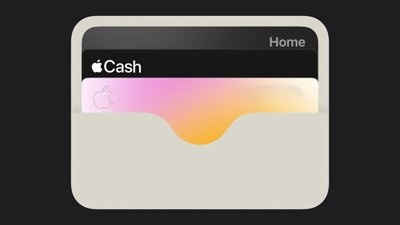
 Charles Martin
Charles Martin

 Malcolm Owen
Malcolm Owen
 William Gallagher
William Gallagher

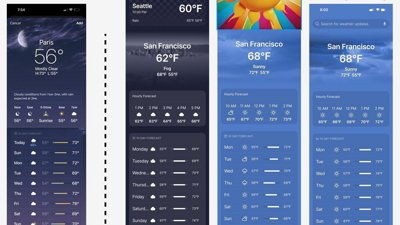





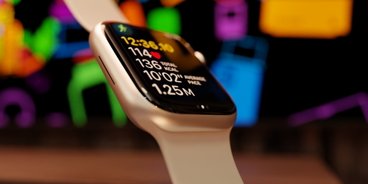

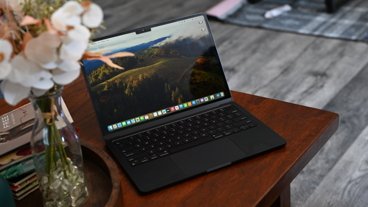
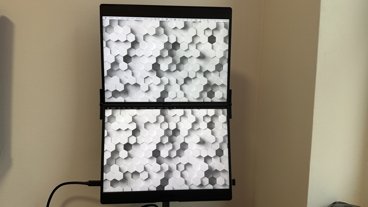

11 Comments
I have one, and it’s the best I ever had. Typing is excellent, and all the rest too, sound, screen, camera. Battery is unbelievable. It’s a bit heavy, I still keep a MacBook 12” around for travel, but for the rest: it’s a beast. The color is nice to, midnight blue… I’m in love. I use an iPad Pro as a second screen next to it. I’m in love.
I recently purchased the 15” MBA and am totally pleased with the performance. I elected for the top model and upgraded the ram to 24mb for $200.
The MacBook Airs are a really nice product, especially now that it's the first time Apple has had a 15" screen laptop offered for less than $1500 in many years.
The one problem is this generation they released the M3 version in March and announced the M4 in the iPad Pros in May. So now for the first time Apple has the MacBook Airs with an inferior chip to the iPad Pro, and presumably the M4 MacBook Airs are coming way later in the M4 Mac release cycle too.